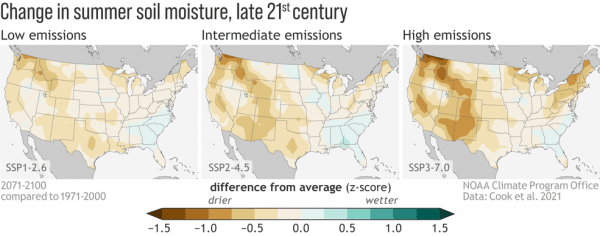Seasonal summer rains have done little to offset drought conditions gripping the western United States, with California and Nevada seeing record July heat and moderate-to-exceptional drought according to the National Oceanic and Atmospheric Administration (NOAA). Now, new NASA research is showing how drought in the region is expected to change in the future, providing stakeholders with crucial information for decision making.
The study, published in the peer-reviewed journal, Earth’s Future, was led by scientists at NASA’s Goddard Institute for Space Studies (GISS) and funded by NOAA’s Climate Program Office and NASA’s Modeling, Analysis and Prediction (MAP) Program. It found that the western United States is headed for prolonged drought conditions whether greenhouse gas emissions continue to climb or are aggressively reined in.
However, the study also showed that the severity of acute, extreme drought events and the overall severity of prolonged drought conditions can be reduced with emissions-curbing efforts compared to a high-emissions future. This is important information for decision-makers considering two tools they can use to reduce climate impacts: Adaptation and mitigation.
Read more at: NASA Goddard Space Flight Center
While the risk of intense single-year droughts increases as greenhouse gas emissions increase in the model results, the risk of multi-year droughts is high regardless of the emissions scenario, the study found. (Photo Credit: NOAA Climate Program Office/Anna Eshelman)


